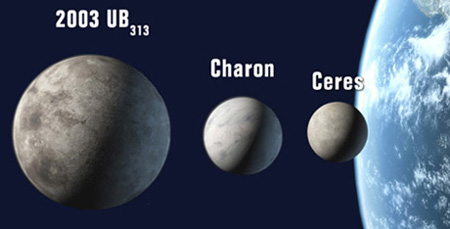|
It's the Astronomy Online non-Blog, or un-Blog.
Everyone has a blog now and since I am no follower of trends, I decided to merge the blog with the website. And I don't want to neglect the website in favor of posting on the blog.
These are the pages that were on the blog of old:
- Home
- Archive (Index of Pages)
- Me
- Current Trends
- Links
- Soho Live
Links:
Google Maps - Mars
Google Maps - Moon
HiRISE
HiRISE - MRO Imaging
Mac Singularity
Meade4M
Slackerpedia Galactica
Software for the Mac
Starry Night Online
Venus Maps
More Favorites:


































Thank you for visiting!
|
|
 |
|
12 Planets in our Solar System? Perhaps...:
On August 24, 2006, 2,400 astronomers - members of the International Astronomical Union (IAU) - will vote on the proposal to define a planet. The proposed definition:
"A planet would be any object that orbits a star, is neither a star itself nor the moon of another planet, and contains enough matter that gravity forces it into a nearly round shape."
This would make Pluto an official planet, but would also include its moon Charon. The reason? Charon does not orbit Pluto, but Pluto and Charon orbit a common point - it's a "double-planet."

This definition would also include the largest asteroid, Ceres, as well as the recently discovered Kuiper Belt Object, 2003 UB313 (unofficially known as Xena).
There is much debate regarding this proposal, but it should be known that the IAU has never officially defined a planet - Pluto was discovered in 1930 and the first organized international meeting of the IAU was in 1932 (I think). In addition, any future discovered objects fitting the description of a planet would automatically be termed a planet.
Image Credit: IAU/Martin Kornmesser
Next Post | Previous Post | Back to Top
|
|

